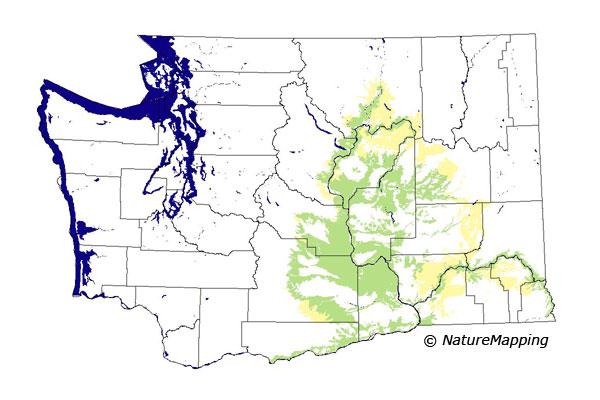 |
Metadata (Data about data or how the map was made)
Legend:
 = Core Habitat
= Core Habitat
 = Marginal Habitat
= Marginal Habitat
Predicted Distribution
Reptiles do not migrate as some birds and mammals, so the colored areas depict
the predicted range for the Sagebrush Lizard year-round. The habitats were
identified using 1991 satellite imagery, other datasets and experts throughout
the state, as part of the Washington Gap Analysis Project.
Other
maps & Information:
|
Distribution and Habitat Requirements
This species is common in the semi-desert and uncommon in the steppe throughout the Columbia Basin. It also occurs in open forests of juniper, Ponderosa Pine
and Lodgepole Pine that have open brushy under-stories , but in Washington, it seems mostly limited to the warmest steppe zones.
Models
The Columbia Basin and Blue Mountains ecoregions were selected.
The two driest steppe zones, Central Arid Steppe and Canyon Grasslands, were core. The damper Three-tip Sage, Big Sage/Fescue and Wheatgrass/Fescue zones were
marginal. A small amount of the Ponderosa Pine zone at the edges of these steppe zones was also marginal.
Grasslands, shrublands and shrub and tree savannas were good habitats.
Translated from the Washington Gap Analysis Amphibians and Reptiles Volume by Karen Dvornich
Webpage designed by Dave Lester.